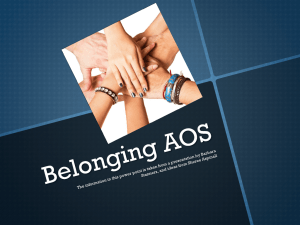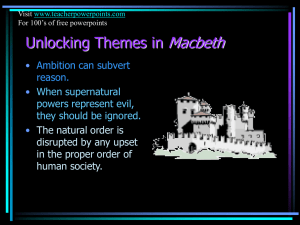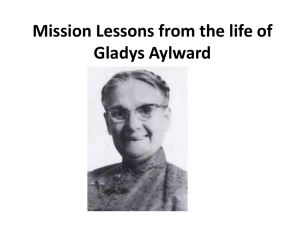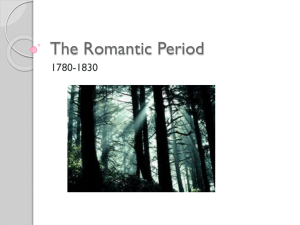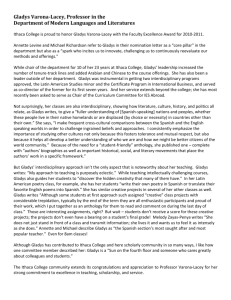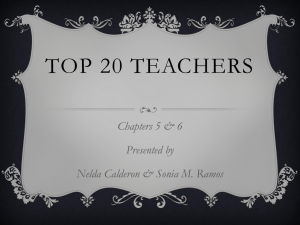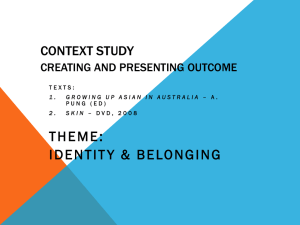Rainbow*s End
advertisement
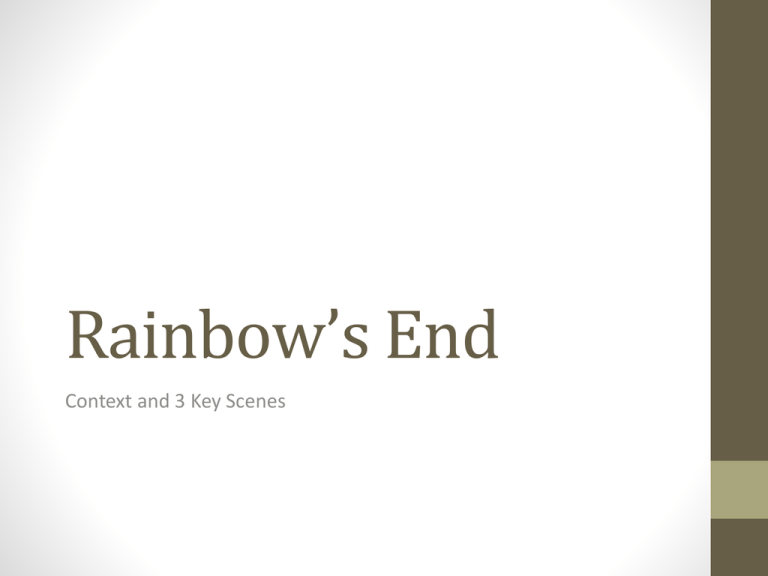
Rainbow’s End Context and 3 Key Scenes Context • First performed in Melbourne in 2005. • Set in rural Victoria in the 1950s at time when Queen Elizabeth II was undertaking an official Royal visit to Australia (1956). • The majority of Australians felt a strong connection to the monarch. • White Australia Policy was still in place. • Aboriginal Australians were not included in the census and they were being forcibly removed from their communities in the manner presented in the play. Act One – Scene Thirteen: Waters Rising • This scene precedes the flood and the rape of Dolly. It is important as it demonstrates how belonging is a perception through the different ideas of Dolly and Errol. • Errol represents the ignorance of paternalistic white attitudes towards what a ‘real home’ and a sense of belonging constitutes. “The point is, you could live in a real home, for the first time.” • Dolly refutes his offer and asserts that “a real home is where people are looking out for each other”. • This scene demonstrates both how people and place influence connections to belonging and not belonging. Act One, Scene Ten: The Bank VS Mrs Banks • This scene demonstrates the tension in Gladys’ character between belonging and not belonging. She wants her daughter to belong to a society that rejects her. • The bank is a foreign world to Gladys and her dialogue and actions in the scene reflect this. • The manager deliberately makes Gladys feel out of place by not offering her a cup of tea despite making one for himself. He also uses patronising language to make Gladys feel inferior. • In the background, Dolly performs a rendition of Perry Como’s ‘Catch a Falling Star’ whilst picking fruit in an orchard. This demonstrates Dolly’s innocence and the audience is made to feel empathy for her situation. • Also consider Act 2, Scene 5: Pay the rent and compare the rent collector with the bank manager. What do these characters represent? Act Two, Scene Seven: The Petition • The last scene of the play is pivotal as it demonstrates changed perceptions of belonging. Gladys realises what is truly important and stands up for the rights of her community as this is where a true sense of belonging is found. • The beginning of the scene demonstrates Errol’s changed attitude: “…where you belong, and your family, is important. To you, and to me.” (p193) • Papa Dear is unable to present the petition at the community hall so Gladys “marches up to podium” and delivers it herself. • In contrast to earlier in the play, her language is assertive and controlled through the use of the imperative “we demand suitable housing for the Aboriginal people” and the rhetorical questions • “Mrs Windsor, would you live at Rumbalara?” and “Why do we have to prove we can live like whitefellas, before we get the same opportunities?” • A dream sequence shows wedding bells and confetti as DOLLY and ERROL get married.



